A weekend getaway where you can escape the summer heat, commune with nature among trees that sprouted before the time of Christ or enjoy landscaped gardens and comfortable accommodations is within easy reach of northern Taiwan. Experience a traditional garden with Chinese and Japanese influences, birdwatching, ecological tours of old-growth cypress forest and one of Chiang Kai-shek’s (蔣介石) namesake villas set among orchards with a beautiful view of the Lanyang River (蘭陽溪) valley, all in the Makauy Ecological Park (馬告生態園區).
The Northern Cross-Island Highway connects Taoyuan and Yilan counties, passing through misty conifer forests as it climbs over the Snow Mountain Range (雪山山脈), before descending to the broad Lanyang River valley that leads to Yilan City. On the eastern half of this road, three sites — at high, middle and low elevations along the highway — form the Makauy Ecological Park. Formerly administered by the Veterans Affairs Council, these sites were tendered out for private operation in 2015 and are now run by Lea Lea Hotels.
VILLA WITH A VIEW
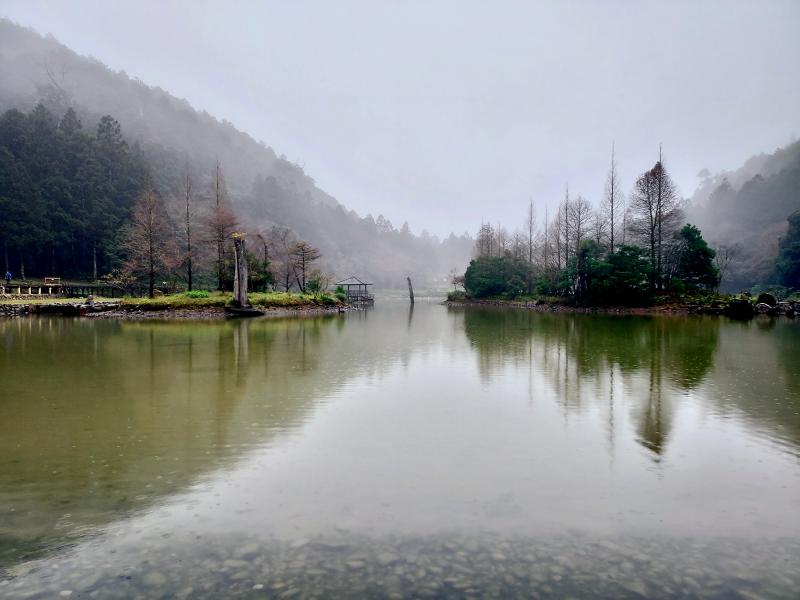
Photo: Tyler Cottenie
When starting from Yilan on the Northern Cross-Island Highway, the first of the Makauy sites is Chilan Resort (棲蘭山莊), located near the point where the highway begins its steep ascent toward Taoyuan. Perched just above the highway with a gorgeous view of the broad river valley, Chilan was originally a Forestry Bureau nursery for reforestation projects. An attractive bungalow with a wood and stone front sits on the property. Formerly the nursery’s guesthouse, after two visits from Chiang, the building was renamed the Chiang Kai-shek Chateau.
A statue of the former leader adorns the lawn of the well-manicured yard. Indoors, the (separate) bedrooms where Chiang and his wife stayed are preserved in their classic 1960s style. Madame’s room plays a recording of a radio speech she made to American listeners, adding a measure of authenticity to the place. Out in the living room — with its stone fireplace and large window opening onto the river valley — there are documents written in Chiang’s hand on display and a recording of one of his speeches playing on a loop as well.
Elsewhere in the park, there is a one-hour walking trail up and down the mountain in back, an orchard, a hotel, a restaurant serving three meals a day and a coffee shop with patio seating. The grounds are attractive and it may serve as a good staging area for those touring in this part of Taiwan who prefer not to stay somewhere too remote.
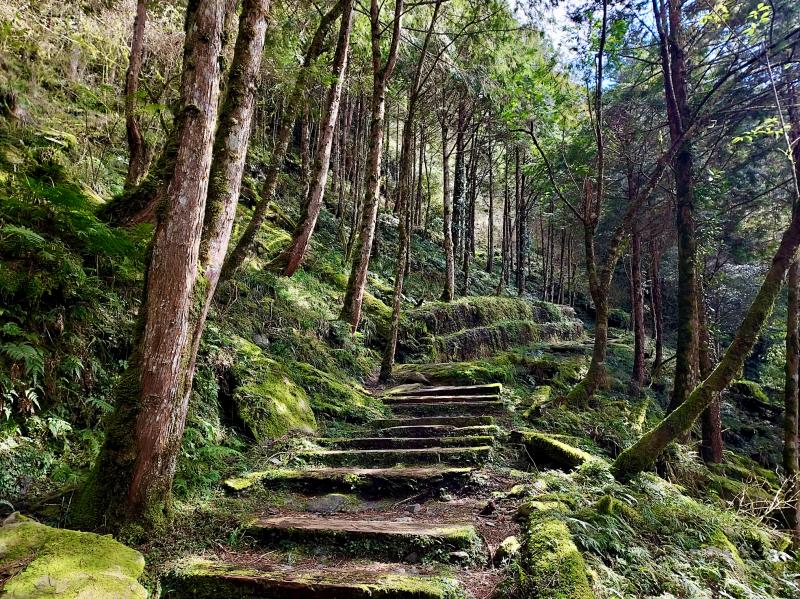
Photo: Tyler Cottenie
MILLENIA-OLD CYPRESS
The most impressive and remote of the Makauy facilities, however, is the Divine Trees Garden (神木園). With nearly 100 named trees, this park is billed as Asia’s largest collection of divine (large and old) trees developed for tourism. The cooler air and ample shade make this the perfect place for a stroll during the summer. The site lies halfway up the mountain on the North Cross-Island Highway. Even those who have driven this road many times may be unaware that the park exists, however, as there is no sign for it. The 20km-long access road begins at a manned Forestry Bureau checkpoint and the trip in can only be made on a pre-arranged shuttle from Chilan Resort below or Mingchih Resort above.
The main attraction in this forest is the great number of old cypress trees. Most of the large cypress in Taiwan were logged for their valuable timber, commonly known as kuaimu (檜木) in Chinese. In fact, there are two species that produce this highly sought-after wood: the Taiwan red cypress and the Taiwan cypress.
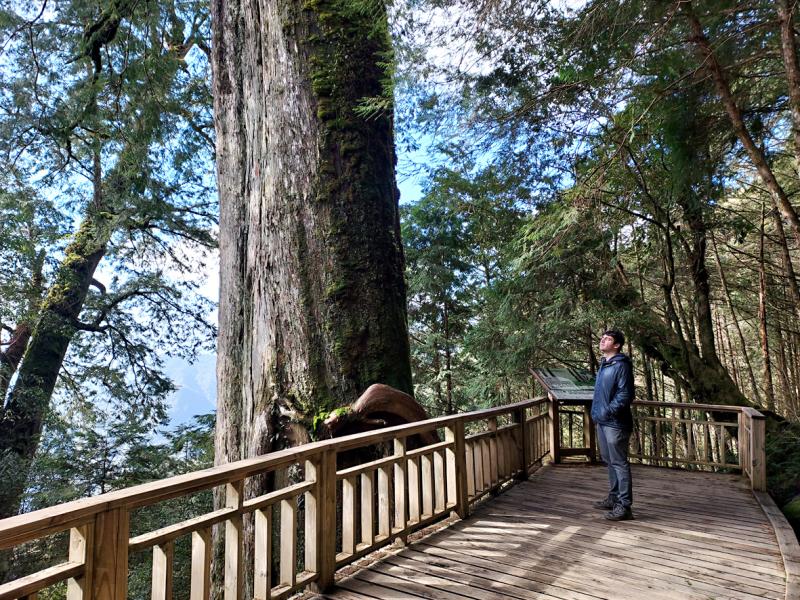
Photo: Tyler Cottenie
Guides help visitors identify the subtle differences between the needles, cones and habitat of each species. The ages of the trees have also been determined and names assigned to them based on a historical figure who was born near the time the tree sprouted. Most are figures from Chinese history, like Confucius, but there is also a Charlemagne tree and a Jesus tree.
The trail ends at a visitor center, with about an hour left before the outbound shuttle arrives. A boxed lunch can be pre-booked and eaten here on a lovely patio while waiting for the shuttle ride up to Mingchih or down to Chilan.
A TANG DYNASTY GARDEN
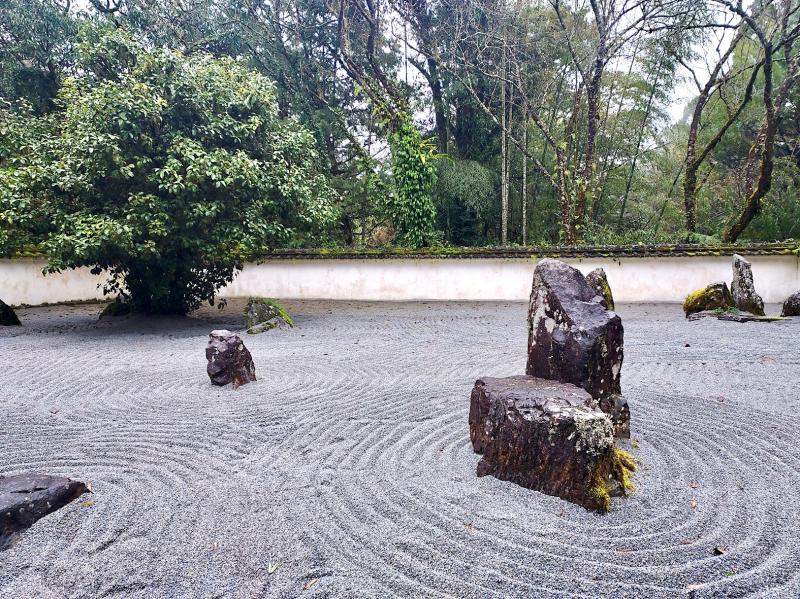
Photo: Tyler Cottenie
Up near the highway’s highest point lies the third section of Makauy Ecological Park: Mingchih (明池). The central feature here is a small lake totally surrounded by high mountains, making for scenic views from any spot on the shoreline. There is a walking trail around the lake, as well as a pavilion in the lake itself, offering a shady place to rest surrounded by the tranquil waters of Mingchih, nicknamed the Pearl of the Northern Cross-Island Highway. Many birds make their home here, including black swans and mallard ducks.
Off to one side is a Tang Dynasty-style garden, “Still Rock Garden.” Plain white walls with brown trim lead visitors toward the showpiece: a raked gravel garden, reminiscent of Japanese Zen gardens. The simplistic architecture and artificial orderliness stand in stark contrast to the wild mountains that surround them, creating a sense of calm and peace. Yet the separation between artificial and natural is not perfect; because of the damp climate found at this elevation, the roofs, walls and walkways here have been partly overtaken by grasses, mosses and ferns, adding a hint of closeness with nature to the experience.
Just outside Still Rock Garden, there are stone walkways with the stones arranged in clever patterns, a pond with a small waterfall feature and cherry trees, and a Japanese suikinkutsu tucked into a cave sparkling with embedded marbles. The suikinkutsu contains a buried pot with a hole in the top that allows drops of water to enter. When each drop hits the accumulated water at the bottom, a pinging sound of slightly different pitch resonates in the large chamber, creating a natural musical instrument.
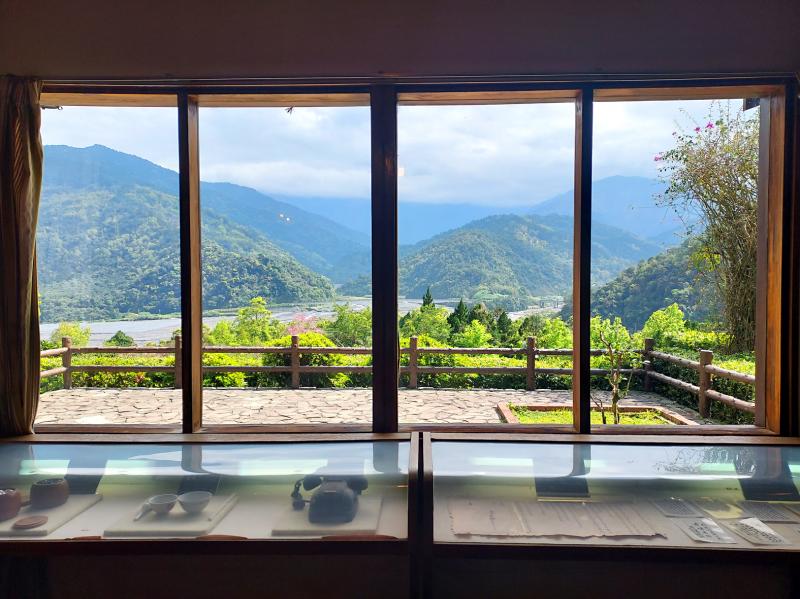
Photo: Tyler Cottenie
Near the exit trail is a maze of wooden walkways and pavilions at different elevations on the mountain slope: the perfect place to let kids burn off some energy. On the way to the exit, visitors pass through the Fern Garden, where over 50 species of fern can be found in a space only two hectares large. After exiting the park, Mingchih Resort is just up the road. It has a highly rated restaurant, and guest rooms for those who like the idea of a remote mountain retreat.
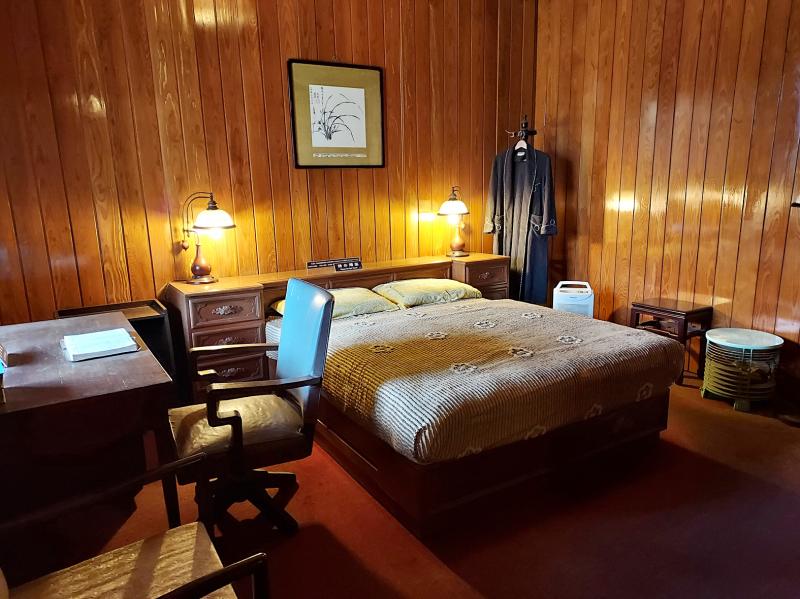
Photo: Tyler Cottenie
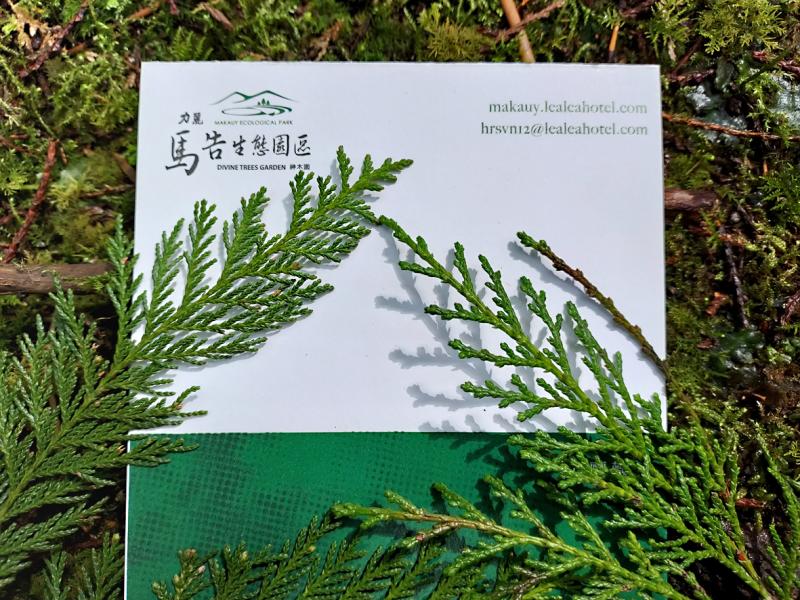
Photo: Tyler Cottenie

Oct. 27 to Nov. 2 Over a breakfast of soymilk and fried dough costing less than NT$400, seven officials and engineers agreed on a NT$400 million plan — unaware that it would mark the beginning of Taiwan’s semiconductor empire. It was a cold February morning in 1974. Gathered at the unassuming shop were Economics minister Sun Yun-hsuan (孫運璿), director-general of Transportation and Communications Kao Yu-shu (高玉樹), Industrial Technology Research Institute (ITRI) president Wang Chao-chen (王兆振), Telecommunications Laboratories director Kang Pao-huang (康寶煌), Executive Yuan secretary-general Fei Hua (費驊), director-general of Telecommunications Fang Hsien-chi (方賢齊) and Radio Corporation of America (RCA) Laboratories director Pan
The consensus on the Chinese Nationalist Party (KMT) chair race is that Cheng Li-wun (鄭麗文) ran a populist, ideological back-to-basics campaign and soundly defeated former Taipei mayor Hau Lung-bin (郝龍斌), the candidate backed by the big institutional players. Cheng tapped into a wave of popular enthusiasm within the KMT, while the institutional players’ get-out-the-vote abilities fell flat, suggesting their power has weakened significantly. Yet, a closer look at the race paints a more complicated picture, raising questions about some analysts’ conclusions, including my own. TURNOUT Here is a surprising statistic: Turnout was 130,678, or 39.46 percent of the 331,145 eligible party

The classic warmth of a good old-fashioned izakaya beckons you in, all cozy nooks and dark wood finishes, as tables order a third round and waiters sling tapas-sized bites and assorted — sometimes unidentifiable — skewered meats. But there’s a romantic hush about this Ximending (西門町) hotspot, with cocktails savored, plating elegant and never rushed and daters and diners lit by candlelight and chandelier. Each chair is mismatched and the assorted tables appear to be the fanciest picks from a nearby flea market. A naked sewing mannequin stands in a dimly lit corner, adorned with antique mirrors and draped foliage

The election of Cheng Li-wun (鄭麗文) as chair of the Chinese Nationalist Party (KMT) marked a triumphant return of pride in the “Chinese” in the party name. Cheng wants Taiwanese to be proud to call themselves Chinese again. The unambiguous winner was a return to the KMT ideology that formed in the early 2000s under then chairman Lien Chan (連戰) and president Ma Ying-jeou (馬英九) put into practice as far as he could, until ultimately thwarted by hundreds of thousands of protestors thronging the streets in what became known as the Sunflower movement in 2014. Cheng is an unambiguous Chinese ethnonationalist,